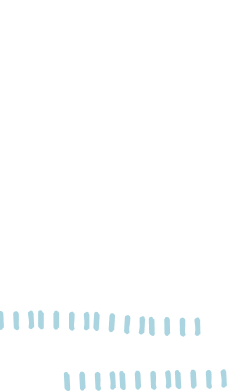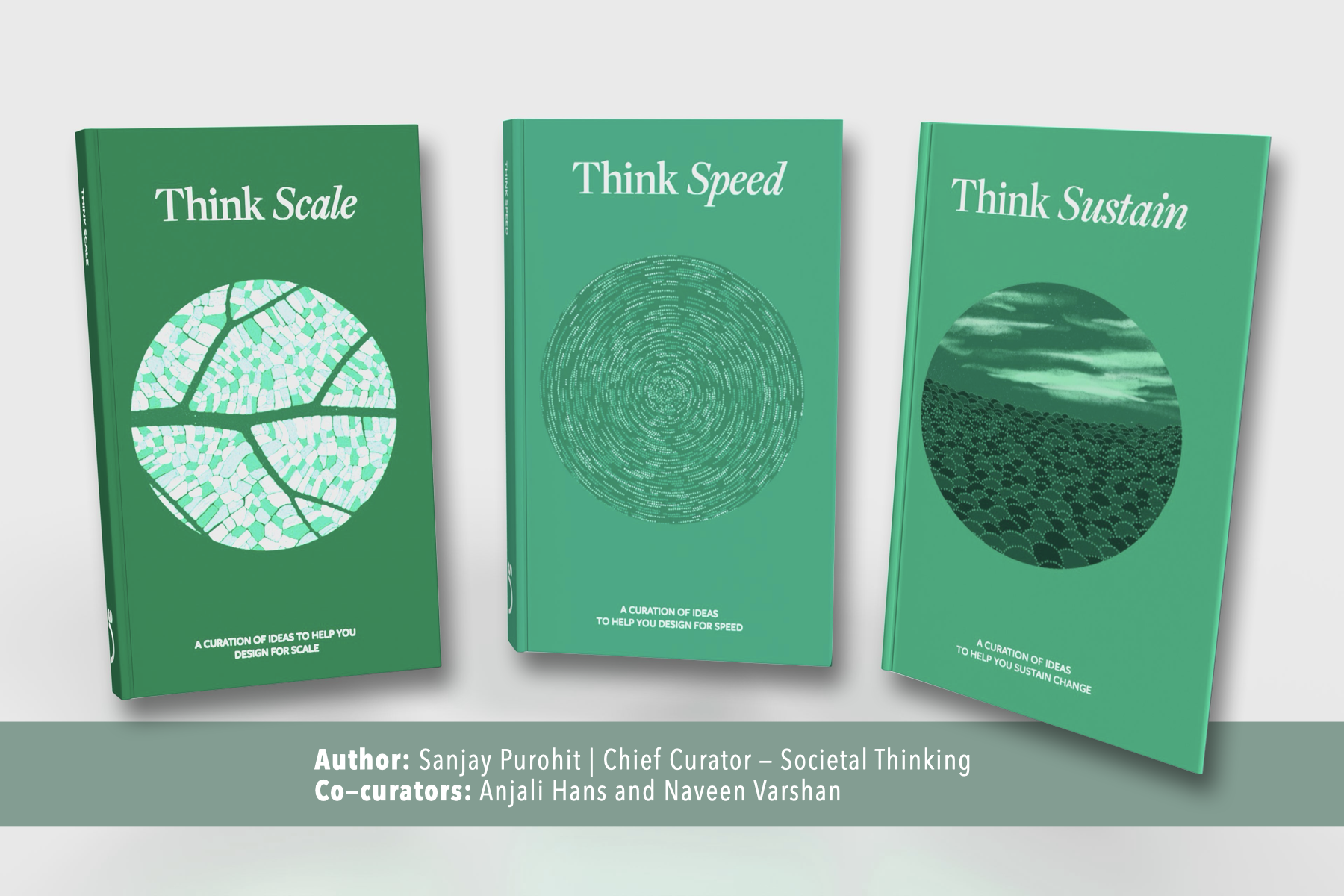In school, I was (much to my mother’s surprise) appointed a Prefect (in India, senior students selected to assist in looking after certain aspects of discipline). While it wasn’t a lot of power or responsibility, I felt very high and mighty making humdrum decisions about school magazines and sock lengths with my fellow Prefects. Growing up, we had learnt that to be a leader was to be stoic, even in the face of crisis, to solve everything without asking for help and to make sure everyone knew who decided if the school magazine’s cover would be blue or red.
Over the years, I’ve worked with leaders who have transformed the way I see leadership – in ways small and simple such as making room for vulnerability and mistakes and in ways that challenge the norm such as distributing the ability to solve. I didn’t have the vocabulary to express this shift until last year when I attended our Leader’s Lab gathering in Bangalore. It brought together change leaders driving impact at societal scale. There, I heard Gautam John talk about leadership in service of society as a tension between external scale and internal depth – to work effectively at scale, we must focus on our strengths and rely on others in the ecosystem to handle the rest, we can only do what we do best and leave the rest to others in the ecosystem.
It sparked a few questions: What does self-efficacy (the belief in one’s own capabilities) mean for change leaders? Social problems grow and mutate faster than our individual ability to solve them. How does self-efficacy extend beyond the ‘I’ and to the organisation, ecosystem and domain? If we have to let go of control and enable all actors in the ecosystem to do what they do best, what are the internal and external frictions we face? What is needed to overcome these frictions?
As the gathering went on, it became clear one of the key mindset shifts paving the way for leaders to move towards system orchestration – leadership that reimagines and persists towards impact at societal scale – is openness.
I’ve read a lot of Gautam’s writing* about what openness truly means and, to look at openness from the lens of leadership, I spoke to him about his journey with embracing openness. Here are a few snippets from our conversation.
What was the spark that led you to embrace openness?
My first experience of openness was the Center for Internet and Society in Bangalore. It was designed as a place for people at the intersection of the internet and society such as free culture activists, open source activists and more, to share knowledge. This is where my alignment with the broader idea of openness was born. Especially since it was so orthogonal to my background as a copyright and intellectual property lawyer, I found it as uncomfortable as curious to see if it was possible to use law as a tool of progress rather than a barrier to reusing, remixing and building upon. I had learned that intellectual property law was a tool for economic growth. Then, when I was exposed to a universe where these laws were seen as monopolies granted by the State for private enterprise at a societal cost, it transformed how I thought about this. What I had considered a strength, I began thinking of as a weakness. And in this weakness, I saw an opportunity to reinvent something that was an interesting intellectual question for me.
Given this shift in perspective, how do you see openness in navigating the challenges of today's BANI world? Why is this mindset particularly crucial for leaders in a context where everything is increasingly brittle, anxious, nonlinear, and incomprehensible (BANI)?
I think of openness as far more than a set of legal or technical requirements. It’s a mindset encompassing curiosity, a willingness to explore and challenge the status quo. It’s a fundamental position one takes at an individual level, then carries it to the organisational level and eventually how one shows up at the ecosystem level. Thinking about how openness plays out across these levels is important to be aware of how individuals interact with their larger socio-political environment and simultaneously shape and are shaped by it.
Especially in today’s BANI world, openness stands out as a heart condition. It’s about being receptive to new ideas, diverse perspectives and most importantly, uncharted possibilities. This is why I think openness is a fundamental precept of leadership. Internally, it has the dimensions of emotional intelligence, intellectual humility and curiosity about people around us and the world. This openness often comes alive as vulnerability. We have been told to see vulnerability as a weakness when it actually comes from a place of strength. But, in my view, it creates opportunities for deeper connections and trust within teams and communities. How I see it, vulnerability is integral to effective leadership. If leaders can be open without constraints of shame or fear, they inspire others to do the same.
A big (and hard part) of responding to our BANI world is to do away with thinking of failures as permanent. They are stepping stones in our journey. They make us resilient, iterative and anti-fragile. More so, if we’re not allowed to acknowledge failures and limitations, how are we ever going to collaborate? Collaboration and co-creation are at the heart of the work we’re all doing. And, we can never collaborate and co-create from places where we never acknowledge our weaknesses because ultimately that’s where we lack the greatest point of attachment for any sort of co-created work. So to me, the ability to acknowledge all of this first for ourselves, then for our organisation, and then as an invitation into the ecosystem is vital. And, we can only do what we embody. So that is why I think that the doing is important, but the being is actually a necessary precondition. It’s an ongoing effort.
In the world we live in, solving complex and fast-mutating social problems requires deep inner work as well as coordinating one’s efforts at scale. In such a scenario, openness may not come intuitively to most leaders. What do you think are the barriers to it and what is possible beyond these barriers?
Often, while thinking about external scale, change leaders worry that openness – maybe as creating and/or leveraging system resources, becoming orchestrators instead of doers and more – equals losing one’s identity. I think what it means is that you actually find your identity and find your greatest role in the ecosystem in which you work. I call this useful, not visible. And, conversely, the more useful you are, the more visible you become.
This is how it played out at Pratham Books as well, which was my first experience of deploying openness, so to speak. I vividly remember the initial hesitation when we first discussed open licensing at Pratham Books. The idea of relinquishing control over our content, allowing anyone to translate, adapt, and even commercialise it, was unsettling. We were a publisher, after all, with a carefully cultivated brand identity and a commitment to quality. Would opening up our content dilute our brand? Would it lead to a flood of low-quality derivative works? These were genuine concerns that we had to grapple with.
The first leg of the journey was internal – to keep our eyes on the mission (getting a book in every child’s hand). The more we anchored our efforts in the mission, the more we were able to accept that open licensing was a powerful tool to achieve it.
Externally, it meant considering what it means for catalysing a community – what kind of a community does it catalyse and what does it catalyse in it? For this, this community comprised authors and illustrators who had been working with us at Pratham Books already. We had many open and transparent conversations, addressing their concerns, and demonstrating how open licensing could actually enhance the reach and impact of their work. And, because we wanted to do right by our community of authors and illustrators as well as readers, we developed mechanisms for quality control on StoryWeaver to ensure that content met certain standards. It’s incredible to think about our journey in retrospect and see how a series of decisions we made led us from 800 stories in 24 languages in 2015 to 55,000 stories in 341+ global languages that have been read over 150 million times as of 2023.
What are the possibilities openness can open up?
Openness fosters serendipity. Serendipity is how, most often, collaboration and co-creation happens. However, serendipity in this case is a mixture of timing and intent. And, openness isn’t just about chance encounters; it’s about intentionally creating a fertile ground for collaboration, innovation, and knowledge sharing. It enables us to tap into a vast pool of resources, talent, and ideas that exist beyond the confines of our organisations. By embracing openness, we can avoid duplicating efforts, leverage existing knowledge, and accelerate the pace of innovation. For example, at Societal Thinking, we’ve seen how building open knowledge platforms and sharing our research and data has enabled other organisations to build upon our work, creating a multiplier effect. Similarly, our efforts to convene diverse stakeholders have led to unexpected collaborations and partnerships, sparking new solutions to complex challenges.
In the last two years at Societal Thinking, I’ve seen this openness show up in a myriad of ways, from choosing to build and leverage public goods and creating open knowledge to nurturing safe spaces within and between organisations to talk about the challenges they face and practising wellbeing. It showed up at Leader’s Lab in the safety it offered for leaders to drop their organisational hats and come together to share and learn from each other and at individual levels. And, zooming out, openness stands out as the connecting fibre between, like Gautam puts it, ‘inner depth and external scale’.
*A look into Gautam John’s writing around openness:
With inputs from Aruna Venkatachalam, Chief, Leader’s Lab and Ashcharya Prabhu, Lead, Leader’s Lab
 Back
Back


